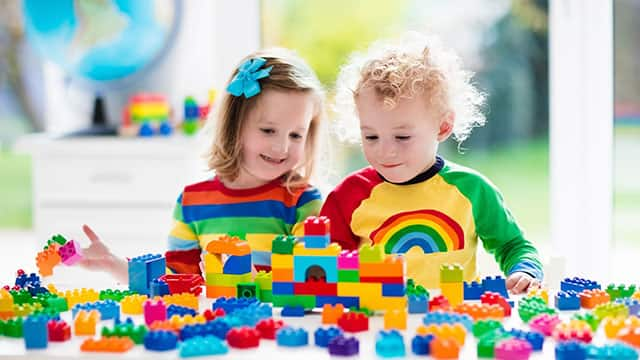Dental Activities for Toddlers and Preschoolers
Getting toddlers to do anything they don’t want to do isn’t easy. Making teeth brushing engaging and fun can help. Here are some suggestions:
- Animal Fun. Most toddlers love mimicking animals and making animal noises. This can come in handy when it’s time to brush their teeth. Have them roar and bare their teeth like a lion. This might make it more fun for them and can help you reach their back teeth. If your toddler dislikes your help brushing, distract them by giving them a stuffed toy and another toothbrush that they can use to brush the stuffed animal’s teeth.
- Mr. Toothbrush to the Rescue! Make the toothbrush a helpful friend working hard to prevent cavities. Have your child give it a name or pretend it’s a superhero that comes in to fight plaque and save the day.
The bottom line with toddlers is to encourage good oral hygiene habits and make brushing seem like fun so they will want to do it.
Older preschoolers may appreciate crafts to encourage teeth brushing. Here are some fun dental activities for preschoolers:
- Lego flossing. While pediatric dentists encourage parents to start early with flossing, little hands might not be the best at it, and you might need to step in. Lego flossing can help your toddler understand what flossing is, so they won’t be apprehensive about letting you floss for them. A couple of large Lego blocks can be teeth, and playdough can be the “plaque germs” that you put in the building blocks' prongs to mimic bits of food and debris that get stuck in teeth grooves). Use yarn (floss) to remove those pieces of playdough, demonstrating how floss can do the same thing in your child’s mouth.
- Eraser brushing. Show your child how to brush correctly by drawing a smile with teeth and using erasable crayons or pencil to draw spots on the teeth. Have your child use an eraser to “brush” away the spots. Explain how brushing with toothpaste acts like the eraser to remove food and stains from teeth and plaque germs that they might not be able to see.
Dental Activities for Elementary Students
Once your child is an elementary student, they will most likely be able to brush their teeth independently. However, according to Stanford Children’s Health, your child might need help flossing until they’re 8-10 years old. It's also an excellent time to talk about diet and how different foods can impact oral health. Some dental education activities you can try are:
- Eat this, not that. Cut out different pictures of food from magazines. Invite your child to pick the healthy foods out of the bunch, and then explain why foods like candy or soda are bad for their teeth. Alternatively, you can give your child pictures of broccoli and cauliflower florets, carrot coins, slices of apples, and nuts, and invite them to create happy faces with the food. After they’ve finished their creation, snap photos of these “happy foods” as a reminder of what foods are good for oral health and create happy teeth.
- Waiting for the tooth fairy. Waiting for your child’s baby teeth to fall out can be frustrating for both you and your child, but you can make it fun by creating a personalized tooth fairy carrier for each time your child loses a tooth. Your child can evenr write a note to the tooth fairy and then place it in the carrier along with the fallen tooth. You can also write back as the tooth fairy, leaving encouraging notes to tell them they are doing a good job and to keep taking care of their teeth. This can be an activity you do until your child loses their last baby tooth. Explain to your child why taking care of their primary teeth by brushing and flossing is still essential, even though they eventually fall out.
Dental Education Activities for Older Kids
School-age kids and tweens might not want to be reminded how and when to brush, but you can still make brushing and flossing fun for them. Surprise them with toothbrushes that have their favorite character on them or encourage them to brush by giving them fruit-flavored toothpaste.
Oral Care Center articles are reviewed by an oral health medical professional. This information is for educational purposes only. This content is not intended to be a substitute for professional medical advice, diagnosis or treatment. Always seek the advice of your dentist, physician or other qualified healthcare provider.
ORAL HEALTH QUIZ
What's behind your smile?
Take our Oral Health assessment to get the most from your oral care routine
ORAL HEALTH QUIZ
What's behind your smile?
Take our Oral Health assessment to get the most from your oral care routine
Join Us
Get the best of your oral health routine and take it to the next level with expert advice, recommendations, products and solutions and special offers.
Join Us
Get the best of your oral health routine and take it to the next level with expert advice, recommendations, products and solutions and special offers.















